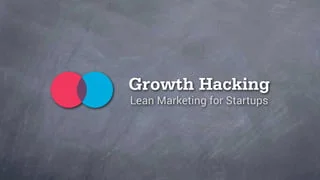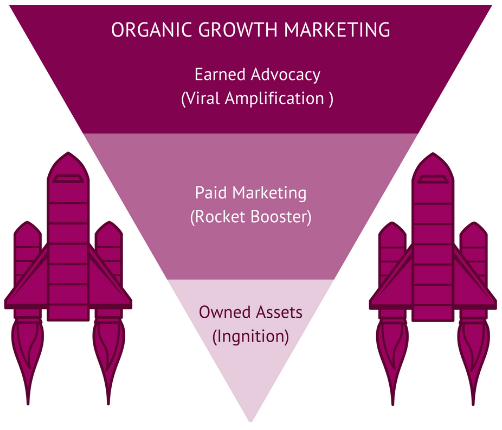
In today’s fast-paced and ever-changing world, the education sector is not exempted from the pressure to adapt and innovate. Schools and universities need to find effective methods to attract and retain students, remain relevant and competitive, and provide quality education and services. One way to achieve these goals is by implementing growth hacking strategies – a term made famous by tech startups but can be adopted by any industry, including education. In this article, we will explore 45 top growth hacking strategies that schools can adopt to thrive in the digital age.
Understanding Growth Hacking in Education
Before diving into specific strategies, let’s define what growth hacking means and why it matters for the education sector.
What is Growth Hacking?
Growth hacking refers to a set of techniques and processes designed to accelerate growth and achieve business objectives, primarily through the use of data, experimentation, and agility. Unlike traditional marketing methods, growth hacking emphasizes lean and iterative approaches, with a focus on results and metrics.
The Importance of Growth Hacking in the Education Sector
The education sector faces numerous challenges, from low enrollment rates and budget constraints to changing student preferences and increased competition. To remain competitive and fulfill their mission of educating students, schools and universities must explore creative and efficient ways to attract and retain students, optimize operations, and improve outcomes. Growth hacking offers a promising framework to achieve these goals, by enabling schools to test and refine various tactics and strategies in a cost-effective and measurable manner.
Building a Strong Online Presence
With the rise of the internet and social media, having a strong online presence is crucial for any organization, including schools. Here are some growth hacking strategies to enhance your online presence and reach out to more prospective students:
Optimizing Your Website for Conversions
Your school’s website is your online storefront, and it should be designed to attract, inform, and persuade visitors to take action, such as filling out an application, scheduling a visit, or subscribing to a newsletter. Here are some tips for optimizing your website for conversions:
- Ensure that your website is mobile-friendly and responsive, as more and more people use their smartphones to browse the internet.
- Create clear and compelling calls-to-action (CTAs) that stand out and align with the users’ goals and pain-points.
- Use persuasive language and visuals to highlight your school’s unique value proposition, such as its academic reputation, faculty expertise, student life, or alumni success.
- Include social proof and testimonials from current and past students, faculty, and community members to build trust and credibility.
- Use analytics and testing tools, such as Google Analytics and Hotjar, to monitor your website performance and user behavior, and identify areas for improvement.
Leveraging Social Media Platforms

Social media platforms offer a powerful way for schools to reach out to their target audience, engage with current and potential students and stakeholders, and promote their brand and offerings. Here are some tips for leveraging social media:
- Create a social media strategy that aligns with your school’s overall goals and target audience, and includes specific tactics, metrics, and responsibilities.
- Choose the social media platforms that are most relevant to your audience and goals, such as Facebook, Twitter, Instagram, LinkedIn, or TikTok. Different platforms have different strengths and formats, so make sure you tailor your content and tone accordingly.
- Use storytelling, visuals, and multimedia to showcase your school’s culture, events, achievements, and impact. Behind-the-scenes footage, student takeovers, and influencer collaborations are popular tactics to build engagement and authenticity.
- Encourage user-generated content and community participation, such as contests, hashtags, polls, and Q&A sessions. This can help your school to build a loyal following and amplify your reach.
- Measure and analyze your social media performance, using tools such as Hootsuite, Buffer, or Sprout Social. Identify which content and approaches work best, and adapt your strategy accordingly.
Creating Engaging and Shareable Content
Content marketing is a crucial aspect of growth hacking in modern marketing, and education is no exception. By creating valuable, relevant, and engaging content, schools can attract and retain students, establish thought leadership, and improve their search engine rankings. Here are some tips for creating high-quality content:
- Define your content strategy, topics, formats, and distribution channels, based on your audience’s preferences, interests, and needs. Popular content types for education include blogs, podcasts, videos, infographics, ebooks, and webinars.
- Collaborate with faculty, staff, students, alumni, and external experts to create diverse and credible content that showcases your school’s expertise and impact. User-generated content, such as student testimonials or guest blog posts, can also add authenticity and variety.
- Use search engine optimization (SEO) techniques, such as relevant keywords, meta descriptions, and backlinks, to improve your content’s discoverability and ranking on Google and other search engines.
- Ensure your content is visually appealing, easy to read, and mobile-friendly, as more and more people consume content on their mobile devices.
- Promote your content through various channels, such as social media, email, influencer outreach, or content syndication. Encourage your audience to share and comment on your content to increase its reach and impact.
Utilizing Data-Driven Approaches
Data is one of the most valuable assets for growth hacking, as it allows schools to make informed decisions, track progress, and optimize their resources. Here are some strategies for leveraging data:
Analyzing and Tracking Key Performance Indicators (KPIs)
KPIs are quantifiable metrics that reflect the performance of your school’s marketing and operations. By identifying and tracking your KPIs, you can measure the effectiveness of your growth hacking strategies and identify areas for improvement. Some common KPIs for education include:
- Enrollment rates
- Retention rates
- Graduation rates
- Application conversion rates
- Website traffic and engagement
- Social media followers and engagement
- Email open rates and click-through rates
A/B Testing for Continuous Improvement
A/B testing, also known as split testing, is a method of comparing two versions of a webpage, email, or ad to determine which one performs better in terms of achieving a specific goal, such as clicks, conversions, or engagement. By conducting A/B tests, schools can identify which design or copy elements work best with their audience, and continuously improve their marketing and communication. Here are some tips for A/B testing:
- Define your hypothesis and test variables, such as headlines, images, CTA, or color schemes. Make sure you only test one variable at a time to isolate the effects.
- Randomize your test groups evenly to ensure accurate results and avoid bias.
- Set clear goals and metrics for each test, and collect data consistently and accurately.
- Analyze the results of your tests statistically, and draw actionable insights. Make sure you understand the significance and confidence level of your findings before implementing any changes.
- Document and share your A/B testing results and learnings with your team and stakeholders, as this can help you build a culture of experimentation and improvement.
Implementing Learning Analytics
Learning analytics is a burgeoning field that uses data and technologies to monitor, analyze, and improve learning outcomes and processes. By leveraging learning analytics, schools can gain valuable insights into their students’ behavior, preferences, and progress, and tailor their education and services accordingly. Here are some examples of learning analytics:
- Tracking student attendance, participation, and performance in class and online.
- Analyzing test scores, grades, and feedback to identify patterns and gaps in knowledge and skills.
- Providing personalized recommendations, interventions, and feedback to help students achieve their goals and overcome challenges.
- Using predictive analytics to forecast students’ future performance and identify at-risk students who may need extra support.
- Collaborating with learning analytics vendors, platforms, or consortia to stay abreast of the latest trends and standards in the field.
Enhancing User Experience

User experience (UX) refers to the overall experience and satisfaction that a user has when interacting with your school’s products, services, or website. By focusing on UX, schools can improve retention, referrals, and loyalty. Here are some strategies for enhancing UX:
Streamlining the Onboarding Process
The onboarding process refers to the first steps that students take when they enroll in your school, such as submitting their application, registering for classes, or setting up their online account. This is a critical moment when students form their initial impression of your school and decide whether to continue or not. Here are some tips for optimizing your onboarding process:
- Simplify and clarify the steps and requirements of onboarding, using plain language, visual aids, and clear calls to action.
- Automate and digitize as much of the process as possible, such as using online forms, electronic signatures, or chatbots to reduce waiting time and errors.
- Provide timely and helpful feedback and support to users who encounter problems or have questions, using multiple channels such as email, phone, or live chat.
- Capture and analyze user data and feedback on the onboarding process, and use it to identify and fix any bottlenecks or pain-points.
Personalizing the Learning Experience
Personalization refers to tailoring the learning experience to the individual needs, preferences, and goals of each student, rather than using a one-size-fits-all approach. By personalizing the learning experience, schools can increase engagement, motivation, and satisfaction among students. Here are some ways to personalize the learning experience:
- Offer a variety of course formats, such as online, blended, or self-paced, to accommodate different learning styles and schedules.
- Provide multiple pathways and elective options for students to choose from, based on their interests and career aspirations.
- Use adaptive learning technologies, such as machine learning or artificial intelligence, to tailor the content and pacing of the course to the student’s progress and performance.
- Provide feedback and support that are timely, relevant, and actionable, such as personalized emails, alerts, or coaching sessions.
- Collaborate with students to co-create or co-design the learning experience, using their feedback and input to continuously improve quality and relevance.
Providing Responsive and Accessible Design
Responsive and accessible design refers to the design and development of websites and digital products that can adapt to different screen sizes, devices, and user needs. By providing responsive and accessible design, schools can reach more users, enhance their satisfaction, and comply with legal and ethical standards. Here are some tips for responsive and accessible design:
- Use responsive design frameworks, such as Bootstrap or Foundation, to ensure that your website and digital products can adjust to various screen sizes and resolutions.
- Follow web accessibility guidelines, such as WCAG 2.1 or Section 508, to ensure that your website and digital products can be used by people with disabilities, such as hearing impairment, motor impairment, or visual impairment.
- Provide multiple modalities and formats for your content, such as audio, video, or transcripts, to accommodate different learning styles and preferences.
- Test and validate your responsive and accessible design using various tools and methods, such as screen readers, color contrast analyzers, and user testing.
Conclusion
Growth hacking offers a set of powerful strategies and tools that schools can use to achieve their goals, overcome challenges, and thrive in the digital age. By applying the 45 growth hacking strategies outlined in this article, schools can enhance their online presence, leverage data analytics, enhance user experience, and provide high-quality education and services to their students. However, it’s essential to remember that growth hacking is not a one-time activity but rather a continuous and evolving process that requires experimentation, agility, and a growth mindset.
